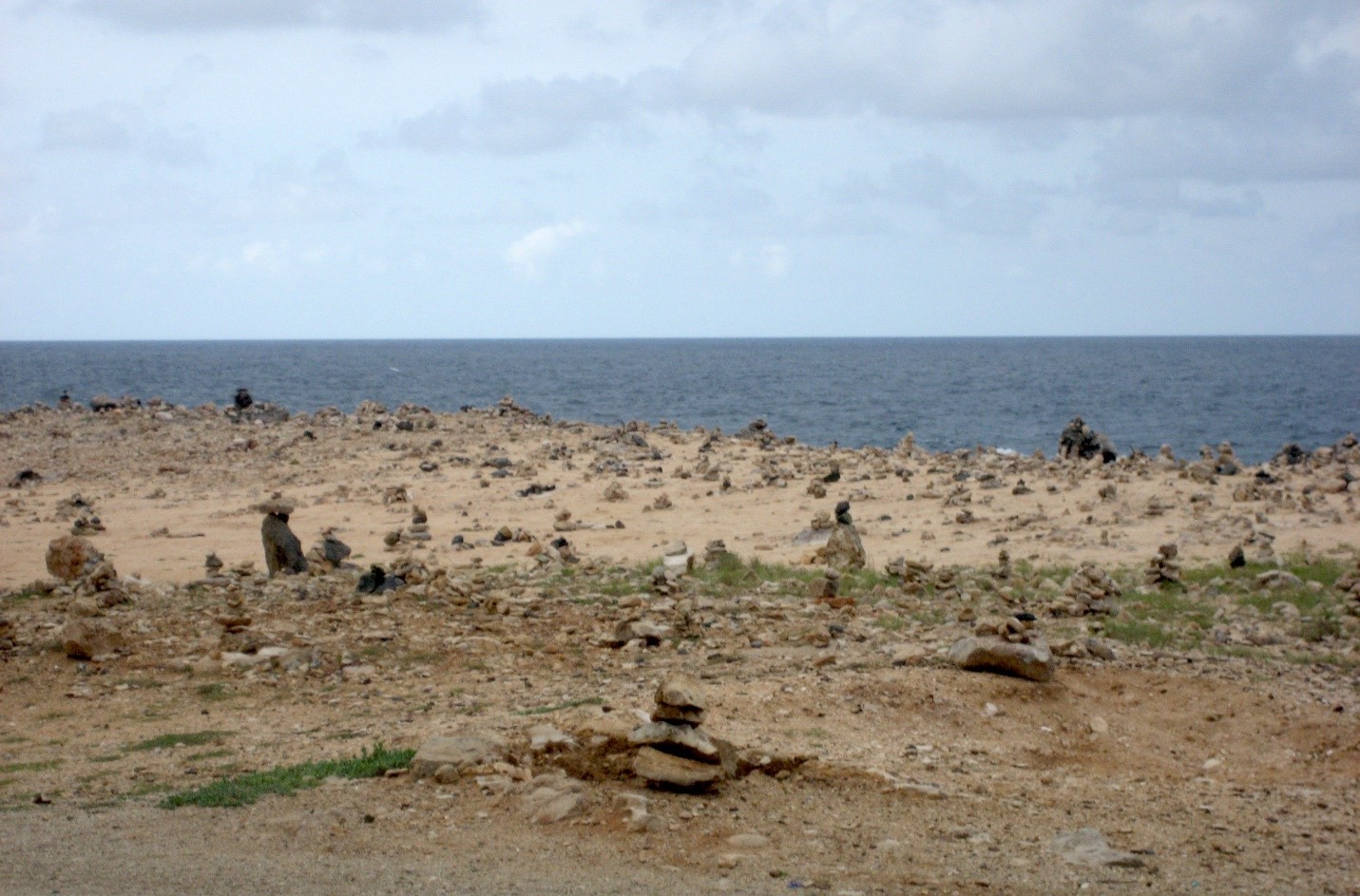Why Do People Stack Rocks at Aruba’s Beaches and How This Hurts the Environment
Walking along the sandy beaches of Aruba, especially here at Rock Wish Garden in Oranjestad, I found many stacks of rocks of different sizes.

- Why Do People Stack Rocks at Aruba’s Beaches and How This Hurts the Environment
- The trend of stacking of rocks
- The allure of rock stacking
- Environmental repercussions
- Harm to marine life
- Preserving the natural beauty
- Alternative ways to appreciate the beach
- Raising awareness of the negative consequences
- Be mindful
🎁 Love free stuff? Get your complimentary issue of Love Eat Travel Magazine.
The trend of stacking of rocks
Aruba’s picturesque beaches, with their pristine white sand and crystal-clear waters, have become a popular destination for tourists seeking relaxation and natural beauty.
However, an emerging trend on these shores has caught the attention of environmentalists and concerned citizens alike: the stacking of rocks.
While the act of stacking rocks may seem harmless and even artistic, it is important to understand the detrimental impact it can have on the delicate beach ecosystem and the environment as a whole.

The allure of rock stacking
Stacking rocks, also known as stone balancing or cairn building, has gained popularity due to its meditative and creative aspects.
It offers a sense of accomplishment as people carefully balance rocks, creating temporary sculptures that stand as a testament to their presence.
Visitors are often enticed to add their own contributions, resulting in an ever-growing stack of rocks.
💡 Insider secrets, not found on the map. Join Michelle Valentine’s email list for exclusive travel advice and behind-the-scenes stories..
Environmental repercussions
Although it may appear innocent, rock stacking has significant negative consequences for the environment.
Disturbing the natural state of the beach ecosystem disrupts the delicate balance of organisms that rely on undisturbed habitats for survival.
These rock formations can alter the flow of water and sand, affecting the natural erosion patterns that shape the coastline.

Harm to marine life
Rock stacking on beaches can also harm marine life.
The rocks provide shelter for small marine organisms and creatures such as crabs, insects, and microorganisms.
Disturbing these habitats can lead to a loss of biodiversity, as these organisms are crucial components of the coastal ecosystem.
Additionally, removing rocks from their natural position can disturb nesting sites for sea turtles, affecting their reproductive success.
Preserving the natural beauty
To protect Aruba’s beaches and preserve their natural beauty, it is essential to discourage rock stacking.
Awareness campaigns can educate visitors about the environmental impact of this activity and encourage responsible beach behavior.
Signs and guidelines can be posted to inform tourists about the importance of leaving rocks undisturbed and respecting the natural ecosystem.
Alternative ways to appreciate the beach
Instead of stacking rocks, visitors can explore alternative ways to appreciate and connect with the beauty of Aruba’s beaches.
Engaging in activities such as beach cleanup initiatives, wildlife observation, or simply immersing oneself in the serene surroundings can foster a deeper appreciation for the environment without causing harm.
Raising awareness of the negative consequences
While rock stacking on Aruba’s beaches may seem like harmless fun or a form of self-expression, it poses significant risks to the fragile coastal ecosystem.
By raising awareness about the negative consequences and promoting responsible beach behavior, we can ensure the preservation of Aruba’s breathtaking natural heritage for future generations.
Be mindful
Let’s celebrate the beauty of the beaches while being mindful of the environmental impact our actions may have.




